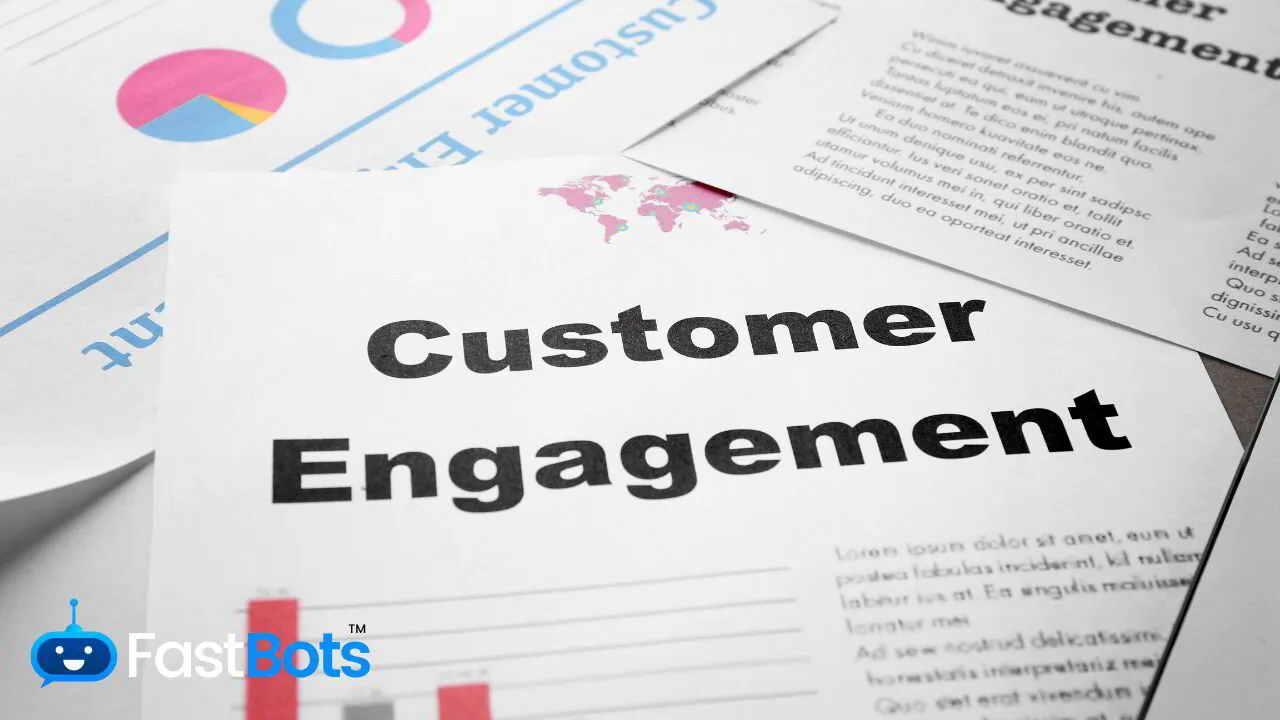In today's fast-paced digital world, customer engagement has become more important than ever. Businesses are constantly seeking innovative ways to enhance the customer experience and, in turn, boost their bottom line. One such approach that is quickly gaining traction is the use of custom chatbots powered by artificial intelligence (AI) technology.
Custom chatbots provide a unique opportunity for businesses to automate personalised interactions with their customers. By leveraging conversational AI, these virtual assistants can handle a wide range of tasks, from answering routine inquiries to offering targeted recommendations based on the customer's preferences. The result is an upgraded customer service experience that delivers quick and efficient support, freeing up valuable time for your human staff to focus on more pressing matters.
By 2025, it is estimated that over 50% of customer service interactions will be handled by AI chatbots. This reflects a growing shift towards embracing technology to optimise customer engagement. Implementing a successful chatbot strategy requires careful planning and a thorough understanding of your target audience to ensure your chatbot's capabilities align with the needs and expectations of your customers.
Defining customer engagement
Customer engagement refers to the emotional connection customers develop with your brand and your products or services. It is a pivotal factor in driving customer satisfaction, loyalty, and ultimately, business growth.
The Role of Engagement in Business Growth
Understanding the role of customer engagement in business growth is crucial in today's competitive world. A high level of engagement means that your customers are actively interacting with your brand and are more likely to:
- Purchase more frequently.
- Share positive experiences with others.
- Provide valuable feedback.
- Become loyal customers.
Here are a few ways in which customer engagement contributes to business growth:
1. Increased customer retention: Engaged customers are more likely to stay loyal to a brand, leading to a steady stream of revenue.
2. Boosted word of mouth: Customers who have a strong emotional connection with your brand are more likely to recommend your products or services to their networks.
3. Positive brand reputation: High levels of customer engagement pave the way for positive reviews and increased brand awareness, attracting new customers in the process.
Measuring customer engagement
Measuring customer engagement is essential for assessing the effectiveness of your strategies. Some common metrics include:
- Churn rate: the rate at which customers discontinue their relationship with your brand.
- Customer lifetime value (CLV): the total revenue generated by a customer throughout their relationship with your brand.
- Net Promoter Score (NPS): A measure of the likelihood that customers will recommend your brand to others.
- User engagement rate: the frequency and duration of customers interacting with your brand, such as website visits or app usage.
Integrating a custom chatbot can significantly improve customer engagement by providing personalised, round-the-clock support. This allows you to address customer needs more accurately and efficiently while offering a seamless, engaging experience that ultimately fosters loyalty and business growth.
THE EASIEST WAY TO BUILD YOUR OWN CUSTOMER ENGAGEMENT AI CHATBOT
In less than 5 minutes, you could have an AI chatbot fully trained on your business data assisting your Website visitors.
Overview of Custom Chatbots
Custom chatbots are a powerful tool for enhancing customer engagement and creating personalised experiences. They leverage conversational AI to interact with users in a more human-like manner, allowing businesses to automate communication without sacrificing the customer experience.
Benefits of Custom Chatbots for Engagement
Personalised interactions: Advanced chatbots analyse user data to deliver tailored responses, addressing customers by name, remembering previous interactions, and adapting to individual preferences. This personal touch helps users feel valued and appreciated.
- 24/7 availability: Chatbots offer round-the-clock presence, enabling customers to receive immediate support and assistance anytime, anywhere.
- Efficient handling of routine inquiries: Chatbots can quickly respond to common questions, freeing up human agents to focus on more complex issues.
- Increasing customer satisfaction: By providing fast, relevant support, custom chatbots help address customer needs and concerns efficiently, thereby boosting overall satisfaction.
- Cost-effectiveness: Implementing a custom chatbot can significantly reduce customer service expenses without compromising on quality.
Designing a Chatbot for Your Brand
1. Define your objectives: Establish the goals of your chatbot, such as increasing customer engagement, handling routine inquiries, or gathering customer insights.
2. Choose a platform: Select a platform that supports your chatbot's requirements, offers integration options, and enables smooth deployment.
3. Design the conversation flow: Outline the dialogue structure, taking into consideration user interactions, intents, and possible responses.
4. Implement natural language processing (NLP): Incorporate NLP capabilities to enable your chatbot to understand and interpret human speech or text input better.
5. Personalise responses and tone: customise your chatbot's communication style, adjusting language and tone to match your brand's identity and audience preferences.
6. Integration with existing systems: Ensure your chatbot integrates seamlessly with existing software systems, such as CRM or customer support platforms.
7. Test and refine: Continuously evaluate your chatbot's performance, gather user feedback, and make necessary adjustments to improve overall usability and effectiveness.
By understanding the benefits and design process of custom chatbots, you can create a powerful tool that enhances user engagement and personalises interactions, ultimately driving customer satisfaction and business success.
Implementing Chatbots in Customer Service
Integration with Existing Systems
To enhance customer engagement with a custom chatbot, it's crucial to integrate the chatbot with your existing systems. This allows for seamless interaction between your customers and the chatbot, providing a smooth customer experience. Integration with internal systems enables your chatbot to access relevant data such as support tickets, product information, and transaction history, allowing it to efficiently handle inquiries tailored to your business.
By connecting your custom chatbot to customer relationship management (CRM) systems, helpdesk platforms, and other software, the chatbot can deliver more accurate and personalised assistance. Keep in mind that customisation options include not only technical aspects but also the chatbot's brand-aligned personality, ensuring consistency within your company's image.
Training Chatbots with AI
In order to create a chatbot that offers quality customer service, it is important to train it using artificial intelligence (AI). AI-powered chatbots can process data efficiently, learning from user interactions and past conversations.
Here are some steps to train your chatbot with AI:
1. Data Collection: Gather previous interactions with customers, such as emails, chat logs, and phone transcripts.
2. Data Preparation: Clean and structure the data, making it compatible with the chatbot's learning process.
3. Chatbot Training: Use machine learning algorithms to train the chatbot based on the prepared data.
4. Continuous Improvement: Monitor your chatbot's performance and collect user feedback for ongoing adjustments and upgrades.
An AI-driven chatbot improves over time as it processes more data and learns from customer interactions. By training your customer service chatbot with relevant data and incorporating AI, you ensure a capable virtual assistant that can facilitate better customer engagement and satisfaction.
Optimisation Strategies
Personalisation Techniques
To enhance customer engagement with your custom chatbot, use personalisation techniques that cater to your users' unique needs and preferences. Implementing tailored responses, adjusting language and tone based on user inputs, and incorporating user data for relevant and proactive interactions can create a standout experience. Here are a few techniques you can employ to personalise your chatbot:
- User profiling: Collect user data, such as demographics, preferences, and interaction history, to create a profile that enables targeted, relevant content.
- Contextual understanding: Use context from previous interactions to provide a seamless conversational experience.
- Emotional intelligence: Incorporate sentiment analysis to understand user emotions and modify the chatbot's responses accordingly.
By combining these techniques, your custom chatbot can offer highly personalised experiences that delight users and boost customer engagement.
Continuous Improvement and Feedback Loops
For your custom chatbot to stay effective and relevant, you must continuously monitor its performance and solicit user feedback. Adopt a growth mindset by implementing feedback loops into your chatbot's workflow. Here are some key steps for creating an improvement cycle:
1. Gather data: Collect user interactions, feedback, and chat logs to analyse your chatbot's performance.
2. Analyse: Identify areas where the chatbot may be underperforming or facing challenges in providing a smooth user experience.
3. Iterate: Implement necessary changes and enhancements to improve identified areas.
4. Evaluate: Measure the impact and success of your implemented changes.
5. Repeat: Continuously gather data and iterate to enhance your chatbot over time.
To solicit user feedback effectively, consider incorporating these methods:
- Surveys and ratings: After important interactions or at the end of chat sessions, ask users to rate their experience or complete a brief survey.
- Direct feedback prompts: Encourage users to provide feedback at any point during the conversation.
By implementing optimisation strategies, you can continuously refine and perfect your custom chatbot, resulting in greater customer engagement and satisfaction.

Analysing Engagement Data
Metrics and KPIs for Chatbots
To understand the effectiveness of your custom chatbot in engaging with customers, it's essential to measure and evaluate various metrics and KPIs. Here are some key performance indicators you should track:
- Number of Users: The total number of users interacting with your chatbot.
- Engagement Rate: The percentage of users who actively engage with the chatbot, typically calculated as engaged users divided by total users.
- Conversation Length: The average number of messages exchanged between the chatbot and a user during an interaction.
- Response Time: How quickly the chatbot provides a reply to a user's message.
- User Retention Rate: The percentage of users who continue to interact with the chatbot over time.
By consistently monitoring these KPIs, you will be able to identify areas where your chatbot is succeeding or underperforming, making it easier to fine-tune your chatbot's functionality and improve engagement.
Using data to enhance the user experience
Leveraging the collected engagement data can help you fine-tune your custom chatbot, optimising its performance and providing an enhanced user experience. You can use the data to:
1. Personalise Interactions: Analyse users' behaviour and preferences to deliver personalised recommendations based on their specific interests and requirements.
2. Improve Conversational Flow: Identify any repetitive or irrelevant responses by the chatbot to streamline its conversational flow for a more engaging user experience.
3. Train with Custom Data: Incorporate industry-specific jargon, product names, and other unique information in your chatbot's training data to improve its accuracy and relevance.
4. Optimise Response Times: Assess the chatbot's response time data and invest in optimisations to ensure quick and effective replies, enhancing overall user satisfaction.
5. Refine Retention Strategies: Analyse user retention rates and develop strategies to maintain or increase the number of users who continue to engage with your chatbot.
By using the engagement data, you can create a custom chatbot experience tailored to your audience's needs, ultimately driving enhanced results in overall customer engagement.
Frequently Asked Questions
How do chatbots enhance the customer service experience?
In what ways can AI-driven chatbots boost customer interaction metrics?
What strategies improve customer satisfaction when interacting with chatbots?
Can chatbots effectively generate leads and assist in sales processes?
How does the personalisation of chatbot conversations affect customer relationships?
What are the best practices for integrating chatbots into omnichannel support?
THE EASIEST WAY TO BUILD YOUR OWN CUSTOMER ENGAGEMENT AI CHATBOT
In less than 5 minutes, you could have an AI chatbot fully trained on your business data assisting your Website visitors.


